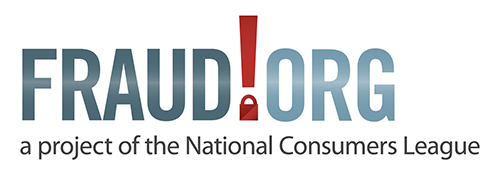Avoid 2016’s top scam: Bogus Internet merchandise – Fraud.org
Last year, Fraud.org collected more than 7,000 consumer complaints about scams, and today we’re releasing our annual list of the Top Ten Scams in order to warn consumers what to watch out for. For the fourth year in a row, scams involving bogus Internet merchandise were the #1 complaint!
For the fourth year in a row, scams involving bogus sales of merchandise were the top reason that consumers complained to NCL. The way many consumers first come into contact with these scams is via a “too good to be true” ad on a website, social media platform, or Internet forum. Popular ways scammers catch consumers’ eyes is with deep discounts on goods like iPhones, sneakers, luxury apparel, video game systems, and even pets. The key to avoiding these scams is to shop around. If the price you’re being quoted is far below what reputable merchants are asking, that’s a red flag of fraud. If you hand over your credit card or gift card number or send a wire transfer to the seller of these goods, chances are that all you’ll get in return is a headache, not a sweet deal.
While Internet merchandise scams remained #1 in 2016, there were some significant new trends, including scammers stealing money from consumers via gift cards, and individual victims losing twice as much cash as in 2015.
Trend: Gift cards as a payment form
Wire transfers and credit and debit cards remain the payment method of choice for scammers, but gift cards as a new form of payment are on the rise. In 2016, Fraud.org saw a 30.86 percent increase in complaints where the payment method included gift cards, including numerous complaints where scammers asked for payment via iTunes gift cards. In such instances, the victim is instructed to load funds onto a gift card and then give the code and PIN number off the back of the card to the scammer, who then quickly deducts funds from the card, leaving the consumer with worthless plastic and little recourse to obtain a refund.
Trend: Falling victim to a scam is getting more expensive
The cost of falling victim to a scam increased significantly in 2016. In complaints where a loss was reported, the median loss was $600, double the $300 median loss reported in 2015. The most expensive type of scam for victims continued to be friendship and sweetheart swindles (also known as “romance scams”), with a median loss of $2,000.
Other top scams
#2: Prizes/Sweepstakes/Free Gifts
Scams in this category typically start when a consumer gets an email, phone call, or text message informing them that they’ve won a big prize. All that’s required in order to collect is to pay a fee (allegedly to cover things like “taxes,” “fees,” “insurance,” or any other reason the scammer can think up). Here’s the catch: the “fee” is all the money that will ever change hands. There are no prizes, lottery winnings, or other big pots of money waiting for the victims. The scammers counts on consumers’ willingness to keep paying in order to chase that elusive big payday. The tip for consumers to remember is that if you’re being asked to pay anything in order to collect your winnings, it’s almost certainly a scam.
#3: Fake Check Scams
For several years, fake check scams topped our top ten scams lists. While they’re no longer our top complaint, we continue to receive thousands of complaints from consumers who fall victim. In these scams, consumers think they are receiving a check as payment for lottery winnings, as payment for a work-at-home job or other ruse. The catch is that they are instructed to deposit the funds into a personal bank account and send proceeds from the check to the scammer. By the time the bank catches on that it’s a fake check, the money is long gone and the victim is left owing their bank. The key to avoiding this scam is knowing that if someone asks you to deposit a check and send money somewhere else (via wire transfer or reloadable prepaid card, for example), it’s a scam.
#4: Recovery/Refund Companies
There are what we call “double-dipper” scams. Consumers who have already been victimized once may be contacted by a scammer posing as a law enforcement agent or other official offering to help recover money lost to scams. The scammer promises that for a small fee, they can help set up a sting or otherwise get back money the consumer has already paid. In reality, the caller is a scammer himself and is just trying to get even more money out of someone who’s already showed a likelihood to fall victim.
#5: Computers: Equipment/Software
This is the scam category where “tech support scams” reside. In one of these frauds, a consumer will receive an email or phone call from someone claiming to work with “tech support,” often for a well-known computer company (claiming to be with Microsoft is a popular ruse). Once the scammer has your attention, they’ll ask you to go to a website where they can “diagnose” the problem. If the victim follows these instructions, the scammer can remotely connect to your computer. The fraudster can then install malicious software like ransomware that prevents access to important files until the victims pays for bogus “tech support services.” The best tip to spot and avoid this scam is to know that a legitimate tech support company should never contact you and ask to remotely access your computer. If you’re concerned that your computer may be infected by a virus, hang up and get in touch with your computer manufacturer directly via their corporate support system.






